Discover the news of the moment
See the articles
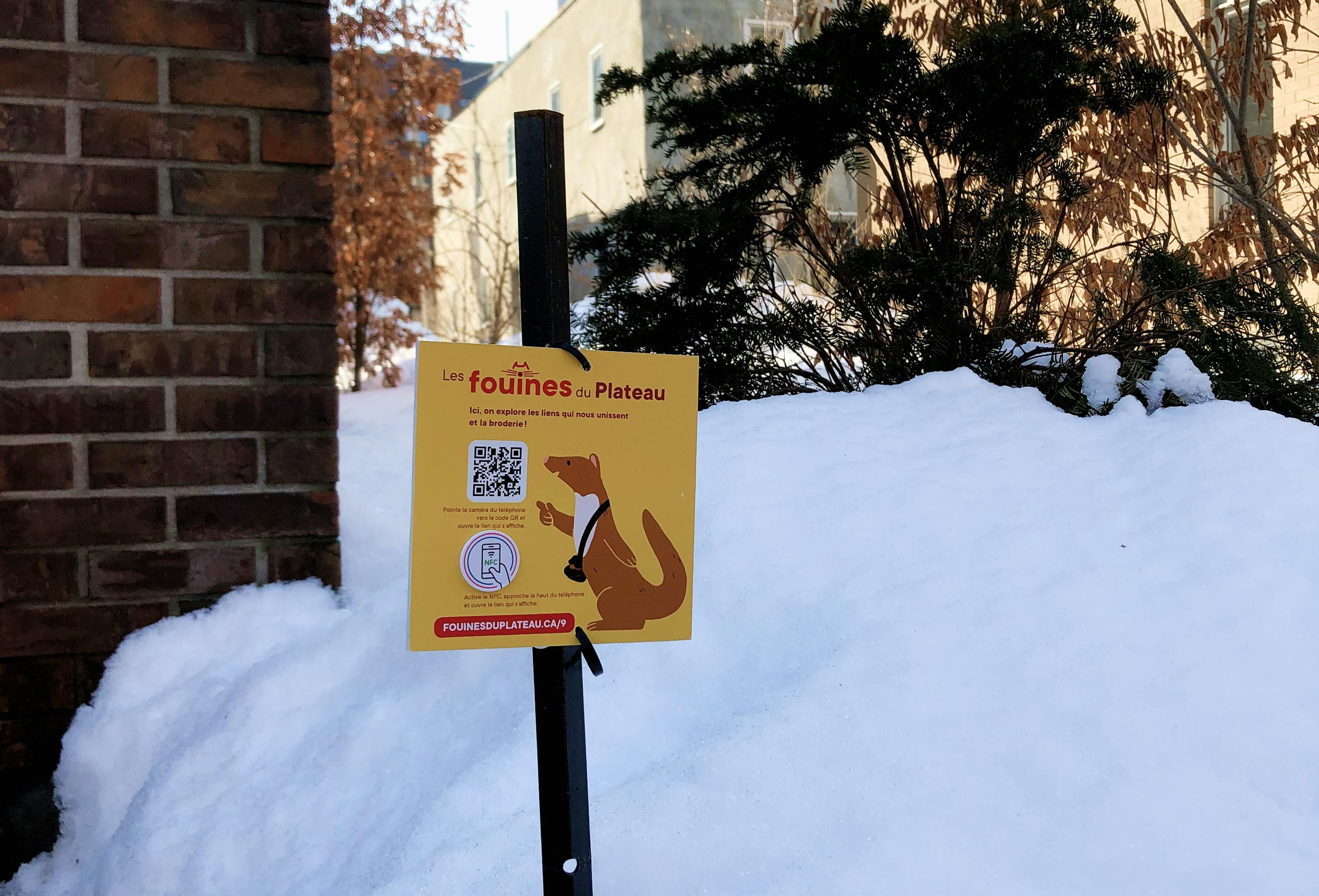
Digital cultural trail: How to successfully combine paper and interactive content
Between paper and digital cultural content, visitors to an indoor or outdoor public place can sometimes be unsettled by an excess of information and media. To avoid this kind of problem, there is a fine balance that those involved in the tourism and culture sectors must respect according to the different contexts. However, we must not forget that “just because it's digital doesn't mean the content is automatically good and of high quality”, as Anne-Josée Lacombe, cultural mediation advisor, points out. In fact, deploying digital content serves as a tool to, first and foremost, inform a visitor about a specific subject.
If you are hesitating between digital and paper to display content in a cultural venue, don't worry. Just use both!
Whatever the digital content, it must be of high quality, as well as well scripted. Paper support is always relevant.
Paper: optional to the experience
Take, for example, the project Les fouines du Plateau, an urban walking tour created using the MySmartJourney platform in collaboration with the Plateau Mont-Royal borough. Accessible via several QR codes and NFC tags scattered throughout the neighborhood, this walking tour combines digital and paper.
In addition to the various posters that serve as calls to action, the digital trail of Les fouines du Plateau comes with additional information on paper: an optional game booklet for families, especially young children. The borough of Mont-Royal wanted something tangible in addition to the digital trail.
MySmartJourney decided to integrate it into the trail, but make it optional for visitors and residents of the Montreal neighborhood. The game booklet is made up of anecdotes, a map with specific points, and cutouts/coloring pages for the youngest children. Here, adults are given the tools to allow children to live the experience to its full potential!
Providing additional information
But what additional information can be provided on a paper supplement even if a complete digital trail exists alongside it?
Well, the project mentioned above, Les fouines du Plateau, is a good example. A tangible version is available in the form of a fold-out pamphlet aimed at families and children, which catches the eye of visitors with its extravagant graphics and pop colors. The leaflet is made up of short anecdotes about the various points identified in the Mont-Royal district. These snippets of information are not found in the multimedia content of the MySmartJourney platform, a good way to create added value with paper! Even if the scannable route is an experience in itself, the leaflet complements the digital, without being compulsory to complete the experience of the Plateau's busybodies. Here, the adult is equipped to enable the child to live the experience to its full potential.
Working on the visual aspect of the paper
Boosting the digital content with additional tangible information can be an incentive for visitors to scan the poster. An intriguing title that makes you want to consume the content and well-chosen colors are essential elements to catch the eye of families and therefore children. Let's take the example of the fouines du Plateau again. The graphics of the trail are based around the color yellow, an eye-catching pigment personalized by a cute little animal: the stone marten. The paper game booklet also includes a large map showing the different locations on the trail, as well as a small coloring booklet. The child can cut out, stick on, draw and color in each of the elements they liked best on the trail: a good idea for generating reflection. The leaflet is part of a kind of treasure hunt. Once they have found the paper supplement, visitors just have to follow the instructions to organize their own trail independently!
Want to create a digital trail without completely abandoning paper?
If you want to include something tangible in your urban digital trail to improve the experience for families, feel free to do so! Adults and children alike should be able to interact with the medium. The game booklet for the fouines du Plateau, produced by MySmartJourney in collaboration with the Plateau Mont-Royal borough, is the ideal complement that goes well with the multimedia content deployed!
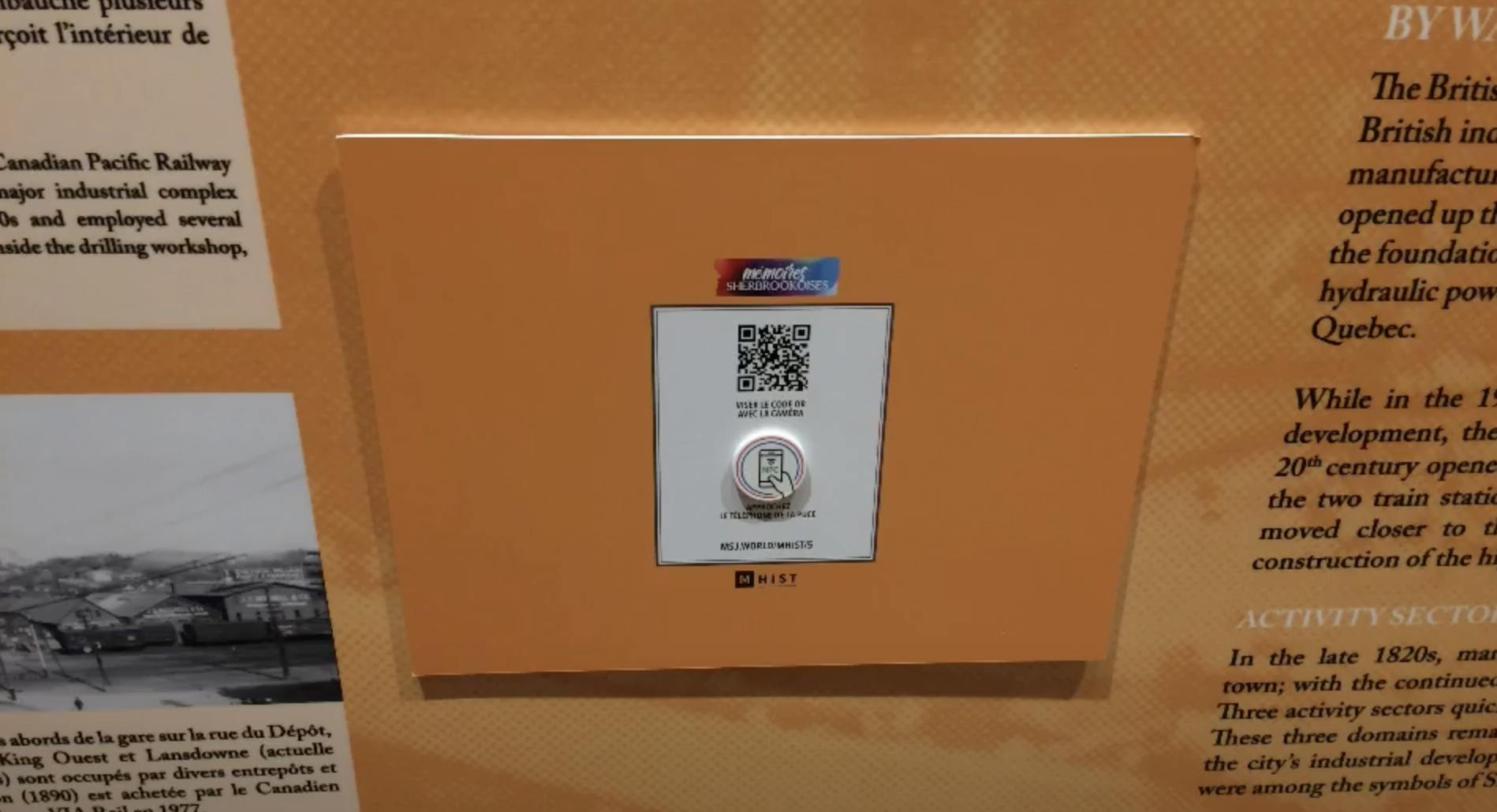
How to create a digital application in a short time?
Deploying good, fully digital content for the tourism and culture sectors is generally a long-term project. It is normally necessary to take into consideration the physical context of the route and to follow the needs of the establishment concerned.
But by using existing technology that allows for autonomy in digital creation, creating content for visitors can be done, not in a few months, but in a few weeks or even a few days!
In this article, we will see how Air Canada, the Sherbrooke History Museum (Quebec) and the town of Bromont (Quebec) have managed to deploy interactive, fun and quality content for their visitors in just a few days.
All thanks to the MySmartJourney platform!
The Sherbrooke History Museum (MHIST)
In just 10 days, the establishment located in the heart of the Eastern Townships was able to imagine interactive content for its visitors, create it on the MySmartJourney platform and deploy it! This is thanks to the ease of use of our SaaS platform.
During the pandemic, when it was announced that cultural institutions could reopen, the museum team looked for a solution that would allow the permanent exhibition to be transformed into a contactless exhibition. With the digital solution, they used QR codes and NFC chips to replace interactives such as listening phones, touch screens and other devices. Visitors can use their cell phones to view and listen to testimonials from Mémoires sherbrookoises.
In addition, the museum has not only transferred the content it already had onto the platform. It has also devised new quizzes, adding an extra element of gamification to the exhibition.
Air Canada
The circumstances of COVID-19 have prompted many establishments to rethink their service. Airports have been particularly affected by the pandemic due to the new health regulations in place. However, this has also been an opportunity for major players, such as Air Canada, to offer new services.
Pre-pandemic, the airport carrier offered its members a free buffet in its Maple Leaf lounges. To be able to reopen safely, Air Canada has rethought its offer by transforming the buffet into a table-side ordering service with MySmartJourney technology.
Passengers can find QR codes and NFC chips at their seats. Simply with their phones, they have access to a menu from which it is easy to order what they want. The kitchen receives the order directly and brings it to their table.
With our SaaS platform, Air Canada has been able to reduce the movement of its staff in the lounge area for better security. In addition, the table-side ordering service has been very much appreciated by customers.
Bromont: Les Épouvantables
During the summer of 2021, Tourisme Bromont entrusted an intern from their team with the task of enhancing the Halloween event, Les Épouvantables. For the traditional competition for the best scarecrow, she had the idea of adding a hunt for digital clues.
When she contacted our team to find out more about the product, her initial idea was to use QR codes to provide access to audio on a single circuit. However, once she had the opportunity to test the platform, she came up with two routes including audio, texts and quizzes.
She designed a trail for families. At each scarecrow, children find QR codes to access content on their phone. They find an audio file, accompanied by a text and a quiz. A correct answer to the quiz provides a clue to the identity of the scarecrow who tried to destroy Halloween. At the same time, families can vote for their favorite scarecrow and have a chance to win prizes from Bromont's merchants.
Want to create a cultural or tourist trail in a short amount of time?
The MySmartJourney content management platform is a simple and intuitive tool. It allows you to create and manage content easily and in a short amount of time. Once you have mastered the solution, you are completely autonomous in the creation and management of your experiences.
Listen to the testimonial of Mathieu Drouin, project manager for the P'tits Rendez-vous d'histoire, about his experience with the platform.
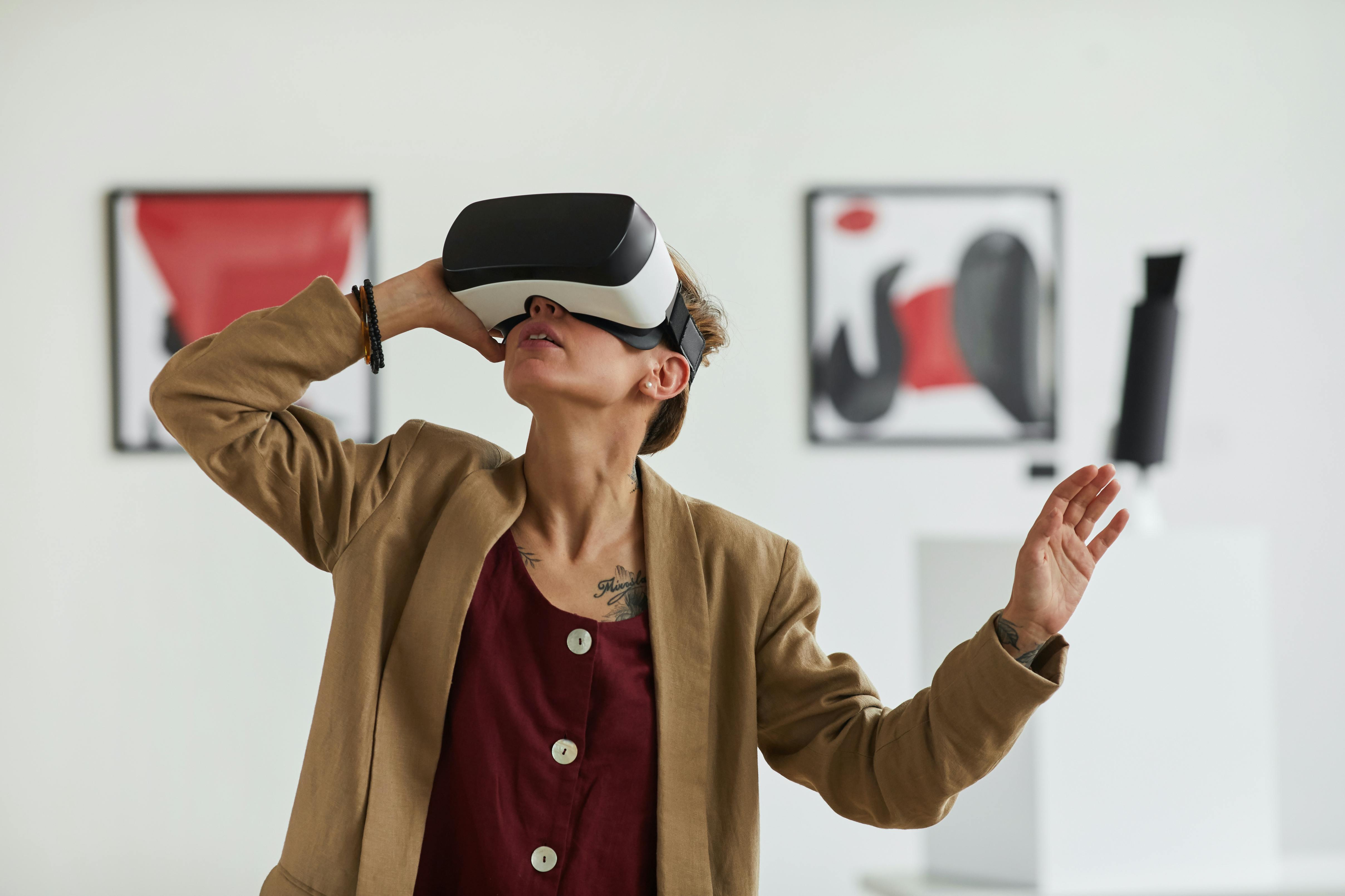
8 ways to bring fun to your museum
As museums and art galleries have begun to re-open their doors to the public, the question arises: How to provide audiences with engaging experiences while maintaining both the safety protocols and the needs of visitors in mind?
It is better for society if museums keep showing us the past instead of becoming part of it, and as the way people communicate and interact with each other changes, new avenues to enhance the cultural enrichment of museum visitors are paved.
What is important for a museum?
The most important thing for a museum is to have its own identity. Visitors must be captivated by a unique museum visit that takes them away from their daily routines to a world of wonder and whimsy.
All museum exhibits are different. If art galleries were people, they wouldn’t dress or act the same way natural history exhibits would. In the same vein, museums should show their personality across their premises and in the way they communicate with their customers.
By having a better idea of who is visiting the exhibits and why they do it, museum curators can have a clearer picture of how best to express the uniqueness of their exhibits. If you are at a tourist destination, you might want to try to inspire a feeling of wanderlust to cater to the expectations of travelers. Museums that are more often frequented by families or schools can consider having customizable information that captures the attention of children.
Learn more about customizable museum visits
How do you make museums more fun?
1. Add interactivity with NFC-integrated technology
Sometimes play can be the best way to learn. From quizzes to educational software, there are many ways to let customers have a hands-on approach to their museum experience.
It is common, even expected, for museums to have items that should under no circumstances be touched by visitors. After all, museums hold invaluable relics and works of art that are meant to be preserved for further generations to behold. However, many learners develop a better understanding and stronger memories by physically interacting with the items they’re learning about.
Everyone wants to know how big they are compared to a dinosaur or see how the helmet on the display would fit on their heads. People enjoy acquiring a little empirical knowledge, especially during a museum visit, and offering instances where they can interact with replicas or full-scale models will be much more engaging to your audience than merely looking and reading.
With the help of MySmartJourney, interaction doesn’t even have to be physical. Even if the world is slowly recovering from the covid-19 pandemic, there are still several regulations taking place and physical contact is still to be avoided when possible. Through the use of NFC integrated technology visitors can access the content of your choice through their phones, thereby reducing the chance of exposure to covid-19.
Near Field Communications (NFC) lets devices communicate over short distances via NFC tags already included in devices such as phones or debit cards. If you’ve ever used contactless payment methods when making a purchase, you’re already familiar with the technology. However, NFC integration can be used in much more interesting ways than handling payments.
MySmartJourney’s customization tools not only let your users interact with your information through an interface with a playful design but will also allow you to create quizzes and other games to challenge and engage with them. You can even gamify your locations, giving a playful touch to a museum visit without the need for any physical installations to be built.
Add NFC integration to your museum
2. Make works of art speak
Museum exhibits will be more immersive experiences if visitors can access audio content relevant to what they’re looking at. Audio tours are the preferred choice of many museum patrons, and through the benefits of customizable audio integration, content can go beyond expectations.
Former audio tour solutions involve the use of messy headphone hardware and extra steps that may end up confusing the user. Thanks to NFC Integration, taking an audio tour is a thing of the past, as not only audio but also text, video, 3D content, and content embedded from the internet can be easily broadcasted via the use of NFC tags. With the help of MySmartJourney’s platform, you can add audio and video content to your exhibits..
3. Reserve spaces for your community
There may be areas in your museum that could be used for something aside from showcasing the regular exhibits. You can set some spaces aside to be used to interact with your community in fun and engaging ways, upgrading your museum to a place people wish to visit regularly.
Perhaps there is a burgeoning local artist scene in your area. Many up-and-coming artists would appreciate a chance to show their work at an established institution and through coordination with local artists, you can put your museum in the mouths of everybody. Displaying works of art created by local artists is a great way of benefiting both your museum and your community.
Any kind of museum or art gallery with a focus on a family experience can benefit by providing areas where children can express themselves creatively while parents sit down at the café. You will put a smile on the face of many if you have a wall intended to display their creations!
4. Planning and hosting special events
You can further attract both people from your area and travelers by hosting special events from time to time. Be it the changing of the seasons or a national holiday, there is always a reason to give people a chance to have some fun at your museum.
Renaissance fairs and similar events are popular with many people, and even though you may not have the space to hold a whole fair, you can repurpose an area of your premises to offer a tiny bit of the fair experience. Musical performances and other culturally relevant activities can catch the eye of those who have yet to decide what places to visit during their travels.
If you’re at a destination of historical significance, you may like to have some performers recreate an event from the past on its calendar date. Several tourists flock to these areas when local festivities are being held and would eagerly watch the show. If your area is lacking in cultural spaces, you can go ahead and turn your museum into your town’s cultural landmark by giving local artists a place to showcase their talents.
5. Join the online conversation
Everyone in this day and age, from celebrities to fast-food chains, has a presence on the Internet. Museum curators shouldn’t ignore social media as a fundamental part of their visitor’s experience.
Advertising on social media can help you reach those who would otherwise be unaware of what museum exhibits have to offer. By using the Internet you can also connect better with millennial and gen Z audiences, who tend to disregard traditional media when looking for cultural experiences.
Through the use of social media, you can promote conversation on topics related to your museum or upcoming events. Fun content or important information you wish to share can be easily reached by your followers. You can even plan giveaways or contests to further spread your museum’s influence.
If you’re already planning on hosting events at your museum, there is no best way to let your community and passers-by know all about them than to have information readily available online. Users not only have easy access to the date, time, and place of the event, but they can also easily share this info with their family and peers with the touch of a button.
6. Give younger audiences a connection to the past
Many millennials and gen Z may not find relevance in museums since they may not consider the past applicable to modernity. To better cater to these customers’ sensibilities, it is advisable to give them a connection between the displays and their modern lives.
Museum exhibits can help transfer the human experience from eras long gone by contrasting how the present has been shaped by the past and how modern trends are mirrored by past events. By using NFC technology to add customizable information to displays, you can give millennial visitors a glimpse of how their lives correlate to those of their predecessors.
For example, several western artists have been influenced by Asian culture. By showing a comparison of the influence Hokusai and other Japanese painters had on western artists like Vincent Van Gogh to how the modern Japanese animation boom is changing current trends in the west, art galleries can give younger visitors a bridge to connect with art history.
Customize your museum exhibits
7. Don’t forget about souvenirs!
Every museum should consider having a selection of mementos for visitors to purchase. Not only is it a great way for a museum to have an additional revenue stream, but it will also allow customers to take a little piece of the magic they discovered during their museum visit home with them.
A lot of visitors are there on vacation and will be eager to get a trinket to remember their trip. Offer them something unique that brings out your museum’s personality. Even small keepsakes like keychains, magnets, and buttons will infatuate many travelers, and depending on your museum and area of expertise, you can offer much more! Some items you can consider offering are:
- T-shirts and other apparel
- Prints and posters
- Books
- Replicas
- Home décor items
- Accessories
- Coffee Mugs
- Postcards
- Local food or drinks
- Handcrafts
You can look to your local community to find suppliers of handmade crafts, art, and jewelry items to offer. Hand-crafted items will add an extra layer of authenticity to your sales stand, as many customers will be looking for items they just can’t find at any store.
8. Offer visitors access to self-guided tours
MySmartJourney lets you easily design and create fun and informative multimedia experiences. All a visitor has to do is scan a code and they will be able to access a playful interface with all the info you need them to have. From there, visitors can guide themselves through the whole visit with the help of the platform.
NFC integrated technology can be placed on any flat surface and will effectively save both your business and your audience time by providing easy access to information. By using multimedia tools, you can not only show text and images but also audio, video, and much more! Museum curators can rest easy knowing guests are getting the most out of their visit.
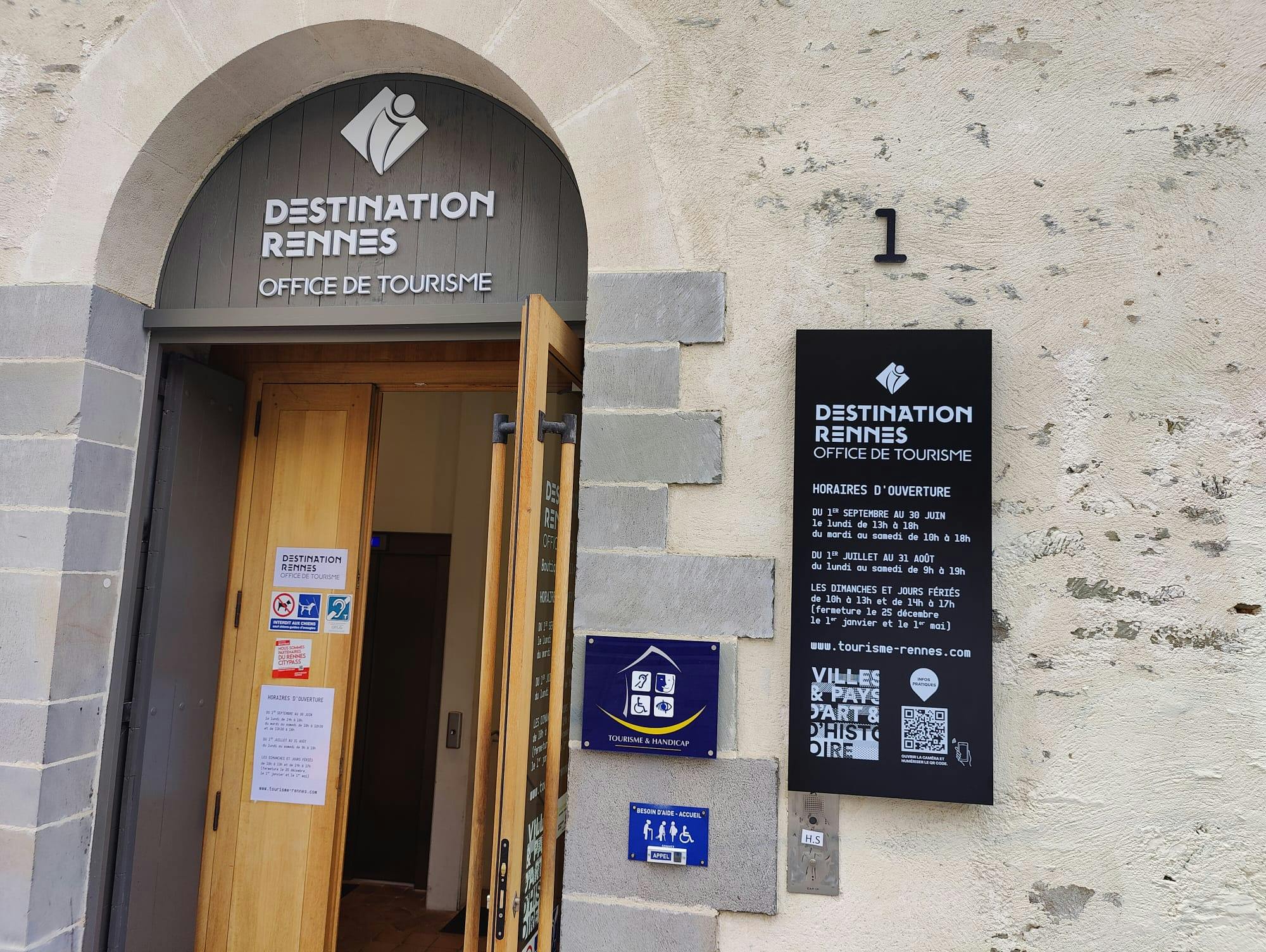
Create a digital experience in the tourist offices
The welcome of a tourist destination is an essential aspect. Who has not found themselves, at one time or another, in front of a closed door? Who has not desperately searched for adequate information to facilitate their visit? Who does not have a memory of a courteous or, on the contrary, unpleasant welcome?
The welcome makes all the difference between a successful visit that leaves a pleasant memory and a failed visit. A satisfied visitor will certainly share their experience with those around them, but let's not forget that an unhappy visitor will let more people know about it!
In a context where visitors are less and less inclined to go to a tourist office, how can we reinvent ourselves by increasingly integrating digital technology into visitor information?
A 24/7 self-service reception point
Interactive terminal - QR code and NFC chip
In order to facilitate access to information for visitors, the MySmartJourney tool acts as an information relay to deploy a self-contained and interactive experience at reception points. But how does it work?
The reception office can install an interactive terminal or a panel at a strategic location, enriched with a QR code and an NFC chip, which bring together all the tourist information about the destination: “where to eat, where to sleep, what to do in the surrounding area, visitor routes, practical information, opening hours, etc.” All the questions that are likely to be asked to a tourist office advisor are available. Information to take away 24/7!
Personalized welcome
Digitizing the tourist office means changing the organization of the space and the methods of reception. In fact, it is a question of re-centralizing the organization around the visitors and their expectations. The reception desk is no longer the central point. It is therefore necessary to integrate information pathways that will enable information to be transmitted more efficiently and continuously.
It is essential to relieve the congestion at the reception area and reorganize it to discern the needs of each visitor and thus favor a high level of personalization of the customer relationship with the visitor who wishes to benefit from physical support from an advisor.
Collect data in real time
With changes in consumer behavior, more and more data is needed to really understand the profile of visitors. They can be asked to complete a satisfaction questionnaire.
To this end, the autonomous reception point allows the collection of essential qualitative data to better understand the behavior of the visitor, without appearing intrusive. The reception desks and all local stakeholders can easily analyze the usage statistics and adjust their offer in real time.
It is also a very good way to gather feedback and opinions from your users on their experience, so you can constantly reinvent and improve yourself. A real dialogue is established. These interactive surveys are very fun and can be like a game, depending on the strategies adopted.
Uniform signage throughout the territory
A harmonious brand image
A tourist destination must convey a harmonious image throughout its territory. It wants to be identifiable by all: it stands out by offering a unique brand and image. To achieve this homogenization of the territory, while being part of a digitization process, interactive signage is an indispensable solution for relaying tourist information throughout the territory by acting as an information hub.
Dissemination of intelligent content
The development of interactive panels, equipped with NFC chips and QR codes, is becoming a must for tourist offices to promote the entire tourist offer, cultural and sporting activities, history, the riches of the destination, visitor routes and much more. These panels redirect the user to entertaining and informative content and to related booking or payment platforms. These redirections enable a networking of the territory that is essential for developing a strong reputation, distributing visitors throughout the territory and thus creating a virtuous local economy for all stakeholders.
Immersive and fun itineraries
A captivating experience
In an era of relentless progress, the digital enhancement of heritage is at the heart of political and regional issues. Capturing the attention of visitors is a major challenge for the tourism and cultural sector. Traditional guided tours are tending to give way to more autonomous digital tours and itineraries, giving visitors more freedom in their discovery, simply using their phone.
It is also an opportunity for regions to showcase places that are little known or less popular with visitors. The question that arises is therefore: how can these routes be made more fun and accessible to as many people as possible?
Without contact or downloading
Facilitating visitor access to information is at the heart of territorial strategies. A new way of passing on information and ensuring that it is retained is through a dynamic display solution that consists of providing information via screens, terminals and panels, without technological constraints.
This information is presented in the form of multimedia content distributed within the tourist office, outside or even on the visitor's cell phone. The visitor can experiment with the content made available to them with their own mobile device: phones, tablets, laptops. The user does not touch anything, they only need their device to immediately access the content when they arrive at a point of interest.
Increasingly used by companies in the tourism and culture sectors, they have taken into account the importance of distributing interactive, fun, playful and easy-to-use content.
Audio content that can be renewed according to your wishes
To compensate for traditional guided tours, MySmartJourney offers the implementation of interactive points spread over several locations. They allow you to walk around independently and benefit from audio accompaniment broadcast on the visitor's cell phone, replacing audio guides. The advantage of the tool is that it offers renewable content with no limits, other than those of your imagination!
To conclude...
Finally, with the important part that tourism represents in the global economy, tourist offices must live up to the expectations, even the demands, of visitors. To do this, reinventing the reception process and communications in public places seems inevitable. Digital tools are significant aids for welcoming and managing visitor flows, distributing the right information at the right time to the right person, making tourists self-sufficient, marketing the destination and collecting essential data for development.
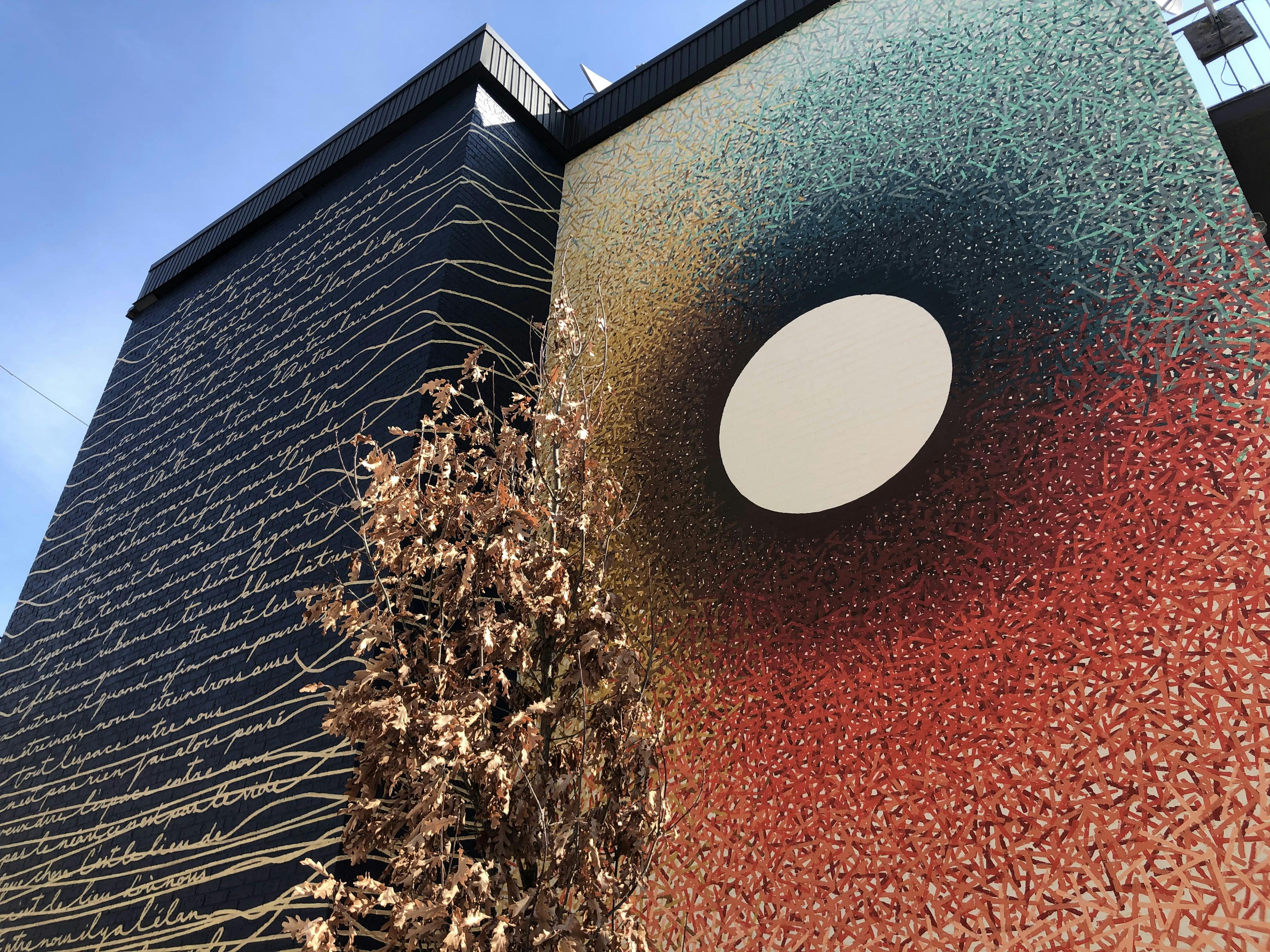
Capturing the attention of visitors during a fun trail
Capturing the attention of one or more visitors is a major challenge for organizations working in the tourism and cultural sector. Traditional guided tours are tending to give way to more autonomous digital tours and trails, allowing visitors to wander around and discover certain places for themselves, armed with their smartphones. But the absence of a cultural mediator should not be an obstacle to the visitor and the experience they are looking for.
If you work in the sector and are hesitating between different visual media to support your content, there are many possibilities open to you. The question is: How can you create visuals that engage visitors in indoor and outdoor contexts?
Everyone is different. The state of mind at the time and the environment in which they find themselves are two things to take into consideration. But some visuals capture attention a little more than others. They bring people together and serve as collective references!
The interactivity of gifs
Animated gifs
Let's take the example of moving images, such as “gifs”. These animated images have long been known to the online community. Ubiquitous on social networks, these small comic images speak to several generations, both young and old. They are an integral part of the collective unconscious. Indeed, the use of gifs “reminds users of the codes of the platforms they frequent the most”, such as Facebook, Instagram, TikTok and many others. In addition, GIFs act as a form of “non-verbal” communication, as well as sometimes “compensating for the absence of a cultural mediator,” explains Anne-Josée Lacombe, a digital cultural mediation consultant.
According to her, these graphic elements give “color” and “personality” to multimedia content. In this case, it is emotion that is sought. Animated GIFs are used to “awaken empathy” which ultimately connects the platform and the visitor. This is the case of the urban digital trail “les fouines du Plateau”, an interactive walking trail for families, created by MySmartJourney, in collaboration with the Arrondissement du Plateau Mont-Royal, Tourisme Montréal, the City of Montreal and the Ministry of Culture and Communications. The digital content, displayed via several posters with QR codes and NFC tags, is full of animated images (gifs) of all kinds. The gifs are chosen to create a small reaction or effect in users, guiding and congratulating them throughout the experience.
Collective referent
In addition to invading the collective unconscious, animated GIFs serve as anchors for many. Even if these images are sometimes considered an “outdated” technology, we cannot ignore the referential impact on the community. Indeed, a “sense of belonging” is created with GIFs. These are the effects of the codes of social networks such as Facebook or Instagram.
These images are suitable for families, children, adults and teenagers. Age does not determine the interest in this kind of content. Gifs speak to everyone, regardless of age. The content can also be interpreted differently depending on the visitor. They are free to see the image as they wish. This is the “culture of mashup”.
Gamification and engagement
The effect of gifs on the user varies from one person to another. However, these images leave room for the appropriation of the content. The possibilities of interpretation are numerous and consolidate the experience of the “mobile” self-guided tour, in addition to increasing the receptivity of the visitors who consume the content in question.
MySmartJourney offers a contactless and download-free solution. Our web platform, which is increasingly used by companies in the tourism and culture sectors in Quebec and France, allows for the distribution of interactive, fun, entertaining and easy-to-use content. Considered less traditional content, these small images known as “gifs” are royalty-free, as well as being our trademark. Our clients use them to tell a story, to convey emotions to their visitors, and it works!
Visiting an indoor or outdoor public place has never been so much fun!

How can we compensate for the lack of cultural mediators in the cultural and tourism sector?
The acceleration of the digital transition in the tourism and culture sector has turned traditional tourist visits upside down. The advent of technology and self-guided visits now increasingly play a role that was previously fulfilled by a cultural mediator.
If you intend to create a digital self-guided tour to help your visitors discover a place in an interactive way, without losing the added value of good cultural mediation, there are several options available to you! The question is: How can you engage visitors without a cultural mediator?
Creating an attractive and engaging environment for visitors is the key to getting their attention.
Offer engaging and fun content
Here, the important thing is to distribute simple multimedia content that can be used for cultural mediation in public places. According to Anne-Josée Lacombe, at the Forum des innovations culturelles du Québec in 2021, the absence of a mediator is not catastrophic, as long as this absence is compensated for by engaging digital content. There would therefore be an “opening up of perspectives” with regard to traditional guided tours.
Indeed, the user must be kept active at all times during the tour, especially outdoors, otherwise the surrounding distractions may cause them to abandon the experience. To keep them “active”, it is a question of generating content that can be appropriated by the user.
The more receptive the person, the more it is possible to “transmit rich and meaningful content”. This is what MySmartJourney has done with les fouines du Plateau, an interactive walking route for families. It was created in collaboration with the Plateau Mont-Royal borough of Montreal and Tourisme Montréal in particular. The content of the fouines du Plateau, accessible in the neighborhood via numerous QR codes and NFC tags, has the codes of various social networks such as Facebook and Instagram. In addition to being interactive, the content is quite short and allows for quick consultation, similar to social networks.
Appealing to the emotions
Using digital technology to “appeal to the emotions and the senses” is a real challenge to be taken into account when creating a self-guided tour. A particular visual is necessary. Let's take the example of the fouines du Plateau again. Here, the use of gifs “reminds users of the codes of the platforms they use the most ” on a daily basis, such as Facebook, Instagram and many others. In addition, gifs act as “non-verbal ” modes of communication, in addition to “compensating for the absence of a cultural mediator,” explains Anne-Josée Lacombe, quoted above. According to her, these graphic elements give “color” and “personality” to the multimedia content.
Moreover, finding a way to congratulate the visitor through the platform is another element that appeals to the emotions. In the case of a historical quiz, for example, applauding the visitor after a correct answer can encourage them to continue the multimedia experience. Let's not forget that “clicking is engaging”!
When designing a route of this kind, you have to be “directive”, according to the cultural mediation consultant. The aim here is to get visitors to take concrete action, using their senses and perceptions in particular.
Appeal to the senses
Here, it is emotion that is sought. Animated GIFs are used to “awaken empathy”, which ultimately connects the platform and the visitor. Consuming content online is good, but having something tangible in your hand and observing it in an outdoor context is even better. The fouines du Plateau trail not only offers content accessible via QR codes and NFC tags, but also paper pamphlets to amuse children and make the tourist experience more concrete, despite the absence of a cultural mediator.
Do you want to create a 100% autonomous outdoor trail without direct mediation?
You will therefore need to generate content that will serve as a springboard to give visitors to your site a concrete experience, bearing in mind that the proposed multimedia experience must take into account the context in which the visit takes place, whether outdoors or indoors.
The contactless technology of MySmartJourney is increasingly used by companies in the tourism and culture sectors in Quebec and France. There are several advantages to using existing technology: it's simpler! What better way to provide your visitors with a fun multimedia experience than MySmartJourney. Our clients use it to tell a story, to convey emotions to their visitors, and it works!